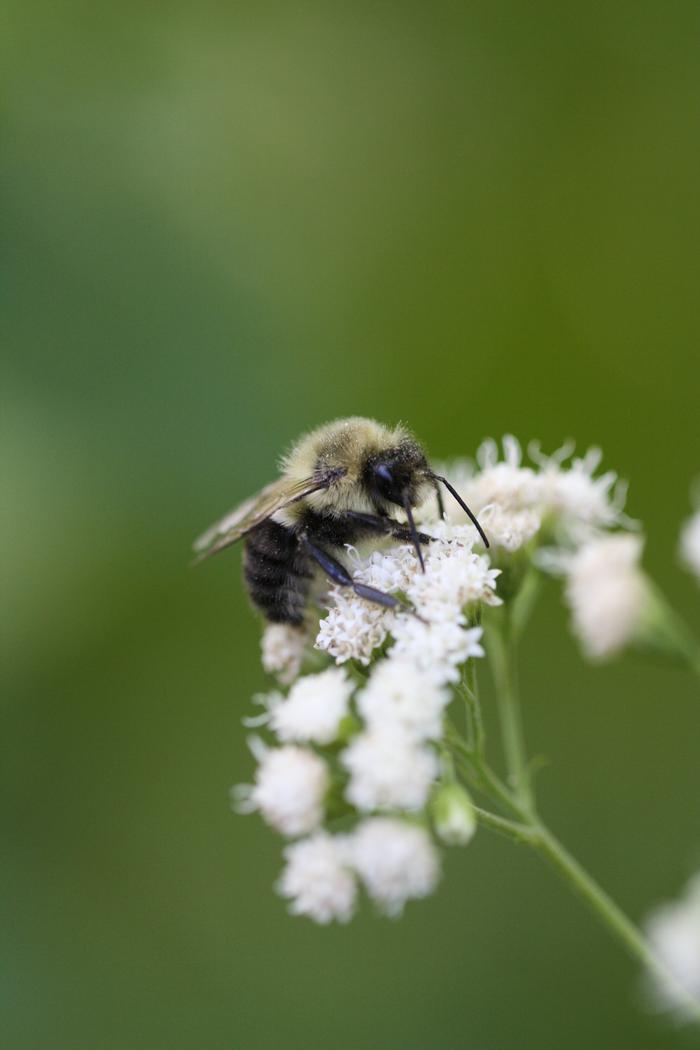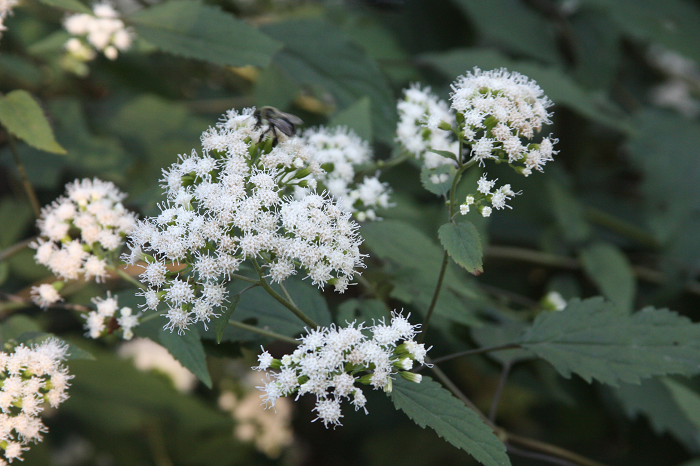General Description
Bloom Description: Lacking ray flowers, this sunflower family plant only has disc flowers in its composite flat-topped flower clusters. Tiny individual flowers are packed in corymbs 3-4" wide. The bright white flowers brighten up shady areas in August, September, and October.
Growth Habit & Shape: White snakeroot has coursely toothed, oval shaped, opposite deep green leaves on upright stems. Bushy and lush, plants start off in their own distinguishable clumps, and over time they spread by rhizomes and seed to form colonies.
Soil Preferences: Average to moist and humusy soils. Tolerates dry soils, but prefers moist.
Root Description: Rhizomatous spreader
Garden Uses: Wildlife gardens, cottage gardens, shade gardens, rain gardens and naturalized areas.
Best Management & Maintenance: To avoid undesireable reseeding cut back spent flower heads before they go to seed.
Common Problems: Leaf minors and flea beetles occaisonally attack the leaves.
Benefits
Ornamental Value:
Wildlife Benefits: The flowers attract bees, butterflies and moths for late season forage. A larval host plant for the caterpillars of clymene moth, Leucospilapteryx venustella, dusky groundling, and hitched arches.
Other Practical/Environmental Benefits: A great plant for use in bioretention basins, rain gardens, and waterwise gardens. Drought tolerant.
Use in place of: Chrysanthemum grandiflorum (ornamental mum)
Ecology
Habitat:
Rocky woodland edges, openings, recently disturbed shaded sites, and moist thickets.
Response to Disturbance: Will reseed readily and spread by rhizome in recently disturbed soils, becoming slightly aggressive especially if there is access to ample moisture and light. In less favorable conditions, such as more established soils in dry shade, white snakeroot will colonize less and allow other plants to grow in the same space with it.
Native State Distributions:
Canada: CA: NB, NS, ON, QC, SK
USA: US: AL, AR, CT, DC, DE, FL, GA, IA, IL, IN, KS, KY, LA, MA, MD, ME, MI, MN, MO, MS, NC, ND, NE, NH, NJ, NY, OH, OK, PA, RI, SC, SD, TN, TX, VA, VT, WI, WV
Wetland indicator status: FACU
Companion Plants:
Solidago flexicaulis (zigzag goldenrod), Geranium maculatum (wild geranium), Zizia aurea (golden Alexanders), Helianthus divaricatus (woodland sunflower), and Sambucus racemosa (red elderberry)
References
Return to Top


